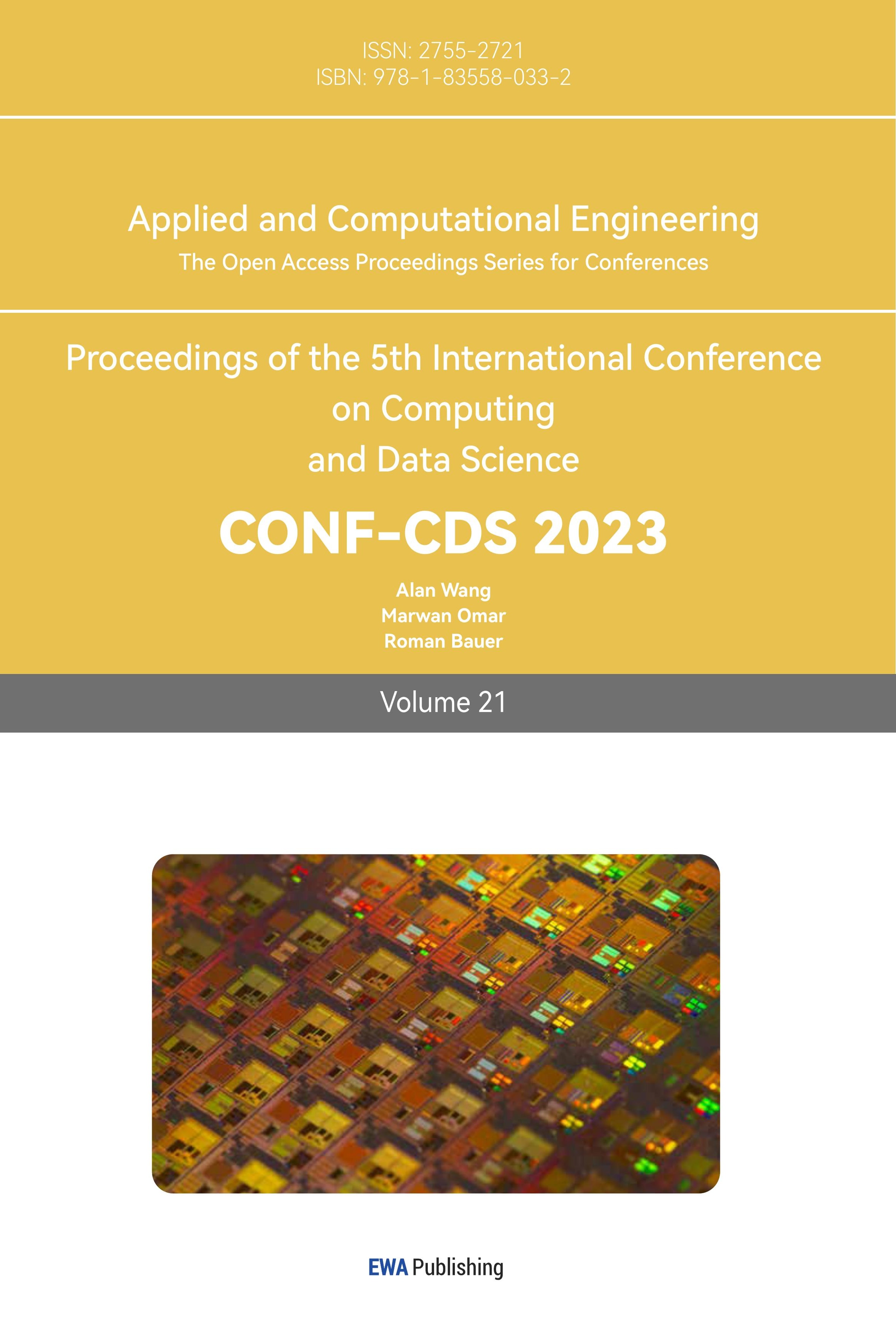References
[1]. Mehrotra R Namuduri K Ranganathan N 1992 Gabor filter-based edge detection Pattern recognition 25(12): pp 1479-1494
[2]. O'Connor B Roy K 2013 Facial recognition using modified local binary pattern and random forest International Journal of Artificial Intelligence & Applications 4(6): p 25
[3]. Chakraverty S Sahoo D Mahato N Chakraverty S Sahoo D Mahato N 2019 McCulloch–Pitts neural network model Concepts of soft computing: fuzzy and ANN with programming pp 167-173
[4]. LeCun Y Bottou L Bengio Y Haffner P 1998 Gradient-based learning applied to document recognition Proceedings of the IEEE 86(11): pp 2278-2324
[5]. Qassim H Verma A Feinzimer D 2018 January Compressed residual-VGG16 CNN model for big data places image recognition In 2018 IEEE 8th annual computing and communication workshop and conference (CCWC) IEEE pp 169-175
[6]. Liang J 2020 September Image classification based on RESNET In Journal of Physics: Conference Series IOP Publishing 1634(1): p 012110
[7]. Wang M Lu S Zhu D Lin J Wang Z 2018 October A high-speed and low-complexity architecture for softmax function in deep learning 2018 IEEE asia pacific conference on circuits and systems (APCCAS) IEEE pp 223-226
[8]. Gordon-Rodriguez E Loaiza-Ganem G Pleiss G Cunningham J 2020 Uses and abuses of the cross-entropy loss Case studies in modern deep learning
[9]. Mehta S Paunwala C Vaidya B 2019 May CNN based traffic sign classification using adam optimizer 2019 international conference on intelligent computing and control systems (ICCS) IEEE pp 1293-1298
[10]. Visa S Ramsay B Ralescu A Van D 2011 Confusion matrix-based feature selection Maics 710(1): pp 120-127
Cite this article
Wu,S. (2023). Face-emotion classification guided by deep convolutional neural network. Applied and Computational Engineering,21,153-160.
Data availability
The datasets used and/or analyzed during the current study will be available from the authors upon reasonable request.
Disclaimer/Publisher's Note
The statements, opinions and data contained in all publications are solely those of the individual author(s) and contributor(s) and not of EWA Publishing and/or the editor(s). EWA Publishing and/or the editor(s) disclaim responsibility for any injury to people or property resulting from any ideas, methods, instructions or products referred to in the content.
About volume
Volume title: Proceedings of the 5th International Conference on Computing and Data Science
© 2024 by the author(s). Licensee EWA Publishing, Oxford, UK. This article is an open access article distributed under the terms and
conditions of the Creative Commons Attribution (CC BY) license. Authors who
publish this series agree to the following terms:
1. Authors retain copyright and grant the series right of first publication with the work simultaneously licensed under a Creative Commons
Attribution License that allows others to share the work with an acknowledgment of the work's authorship and initial publication in this
series.
2. Authors are able to enter into separate, additional contractual arrangements for the non-exclusive distribution of the series's published
version of the work (e.g., post it to an institutional repository or publish it in a book), with an acknowledgment of its initial
publication in this series.
3. Authors are permitted and encouraged to post their work online (e.g., in institutional repositories or on their website) prior to and
during the submission process, as it can lead to productive exchanges, as well as earlier and greater citation of published work (See
Open access policy for details).
References
[1]. Mehrotra R Namuduri K Ranganathan N 1992 Gabor filter-based edge detection Pattern recognition 25(12): pp 1479-1494
[2]. O'Connor B Roy K 2013 Facial recognition using modified local binary pattern and random forest International Journal of Artificial Intelligence & Applications 4(6): p 25
[3]. Chakraverty S Sahoo D Mahato N Chakraverty S Sahoo D Mahato N 2019 McCulloch–Pitts neural network model Concepts of soft computing: fuzzy and ANN with programming pp 167-173
[4]. LeCun Y Bottou L Bengio Y Haffner P 1998 Gradient-based learning applied to document recognition Proceedings of the IEEE 86(11): pp 2278-2324
[5]. Qassim H Verma A Feinzimer D 2018 January Compressed residual-VGG16 CNN model for big data places image recognition In 2018 IEEE 8th annual computing and communication workshop and conference (CCWC) IEEE pp 169-175
[6]. Liang J 2020 September Image classification based on RESNET In Journal of Physics: Conference Series IOP Publishing 1634(1): p 012110
[7]. Wang M Lu S Zhu D Lin J Wang Z 2018 October A high-speed and low-complexity architecture for softmax function in deep learning 2018 IEEE asia pacific conference on circuits and systems (APCCAS) IEEE pp 223-226
[8]. Gordon-Rodriguez E Loaiza-Ganem G Pleiss G Cunningham J 2020 Uses and abuses of the cross-entropy loss Case studies in modern deep learning
[9]. Mehta S Paunwala C Vaidya B 2019 May CNN based traffic sign classification using adam optimizer 2019 international conference on intelligent computing and control systems (ICCS) IEEE pp 1293-1298
[10]. Visa S Ramsay B Ralescu A Van D 2011 Confusion matrix-based feature selection Maics 710(1): pp 120-127









